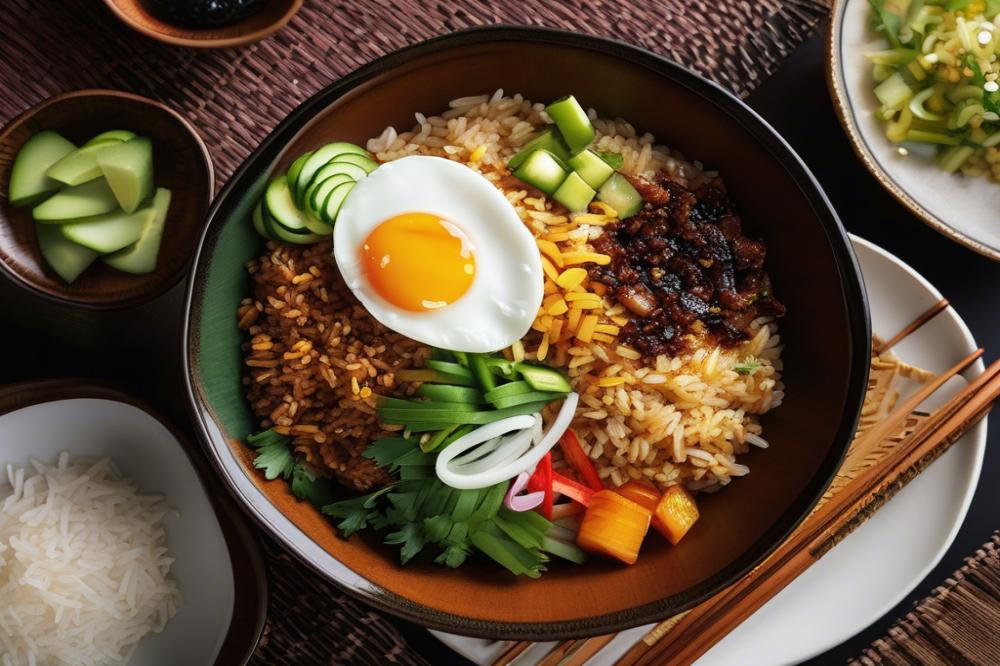Introduction
Japgokbap is a cherished staple in Korean cuisine, known for its delightful mix of flavors and textures. This type of Korean multigrain rice brings together various grains that contribute to both taste and nutrition. Traditionally, families have enjoyed this dish as a side or main course, showcasing its versatility in meals.
In the realm of traditional Korean food, multigrain rice holds significant importance. It not only enhances the visual appeal of a meal but also offers a wide range of health benefits. Many Korean dishes incorporate this rice as it helps balance flavors while providing essential nutrients. Families have relied on this healthy rice for generations, making it a beloved choice in homes and restaurants alike.
Health-conscious individuals will appreciate the nutritional advantages of incorporating this dish into their diets. Rich in fiber and antioxidants, it can aid digestion and promote overall wellness. Plus, the gluten-free nature of many grains used in this recipe accommodates those with dietary restrictions. Thus, making this easy recipe a wonderful addition to any meal plan. Cooking tips for perfect rice preparation include rinsing the grains well and allowing them to soak before cooking. Overall, adding this multigrain recipe to your kitchen repertoire can elevate your meals and support a healthy lifestyle.
Understanding Japgokbap
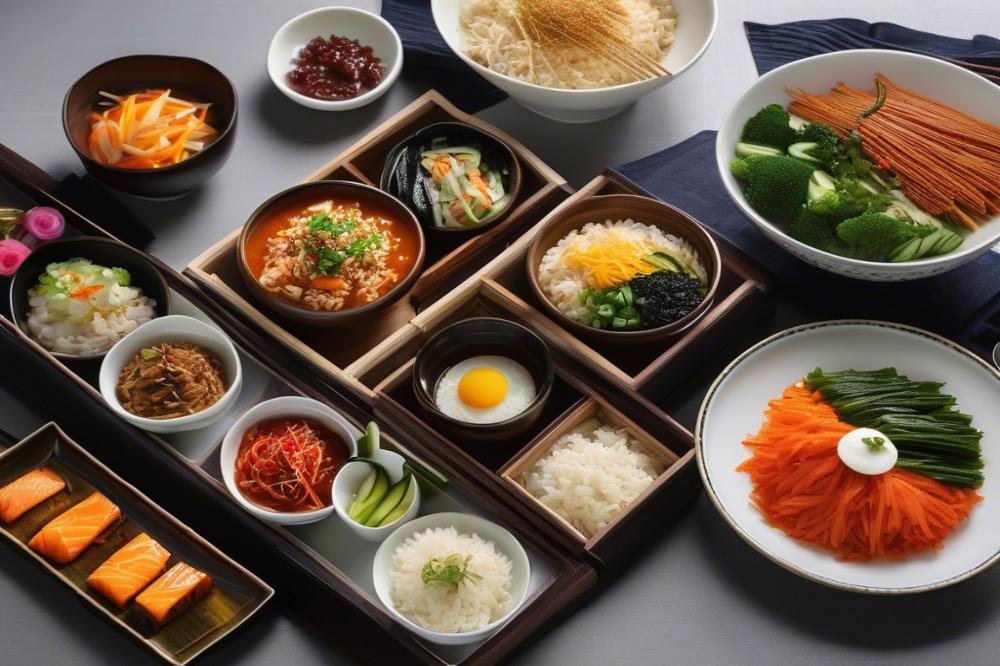
Japgokbap is a multigrain rice dish that plays a vital role in Korean cuisine. Its ingredients usually consist of various types of grains and legumes, making it a staple in many households. This dish not only offers diverse flavors but also reflects the history and culture of Korea. Families often prepare it during special occasions to celebrate togetherness. The unique combination of grains provides essential nutrients and a satisfying taste.
Variations of Multigrain Rice in Korea
Different regions in Korea have their own versions of multigrain rice. Some recipes include barley, millet, or black beans, making each variation special. Rice preparation varies, too. Some may opt for a simple mix of grains, while others might add dried fruits or nuts for extra flavor. Each household often has its own preferred method, passed down through generations. This adaptability highlights the importance of personal taste in traditional Korean food.
Why Japgokbap is Considered a healthy rice Option
Choosing this multigrain recipe brings several nutritional benefits. It is gluten-free, which makes it suitable for those with dietary restrictions. The grains are rich in fiber, which helps with digestion. Each serving provides a variety of vitamins and minerals essential for overall health. People often enjoy Japgokbap as a healthy rice side dish, complementing their meals perfectly. With easy cooking tips, anyone can prepare this dish for their family. Its wholesome ingredients contribute to a balanced diet, making it a favorite among health-conscious eaters.
Ingredients and Preparation
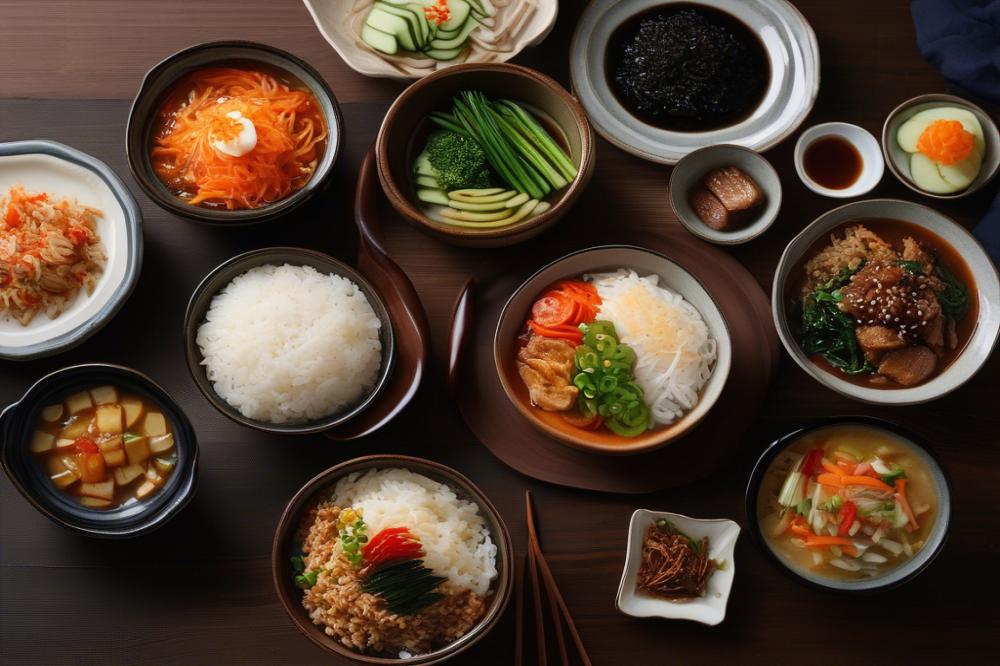
To make this delightful multigrain rice, you’ll need a variety of grains that offer both texture and flavor. Here’s what you need:
- Short grain brown rice: 1 cup
- Black rice: 1/4 cup
- Red rice: 1/4 cup
- Job’s tears (also known as coix seeds): 1/4 cup
- Millet: 1/4 cup
- Water: 4 cups
Each ingredient brings its own nutritional benefits. Short grain brown rice is rich in fiber and essential nutrients. Black rice contains antioxidants that can boost your health. Red rice provides iron and has a nutty flavor. Job’s tears are known for their high protein content. Millet is gluten-free and offers various vitamins and minerals. Using these ingredients not only creates a unique texture but also enhances the nutritional value of your dish.
Washing and Soaking Grains
Proper washing and soaking of grains is crucial in the preparation of any rice dish. Start by rinsing each grain under cold water. This removes excess starch, which can lead to a sticky texture. Wash until the water runs clear, indicating that most of the starch has been washed away. After rinsing, soak the mixture for at least 30 minutes. Soaking allows the grains to absorb some water, making them cook more evenly.
Measuring and Combining Grains
Measuring grains accurately is vital to achieving the right balance. Use a standard cup to measure each type of grain. Combine them in a large bowl before cooking, ensuring that the mixture is homogeneous. Mixing the multigrain blend allows for even cooking and flavor distribution. You want each bite to reflect the essence of Korean cuisine, so consider this step carefully.
This easy recipe for Japgokbap can be a healthy side dish to various meals. The diverse grains contribute to a colorful presentation on your plate, along with numerous health benefits. Families looking for gluten-free options will find this dish to be a perfect addition to their dining table. Enjoy the process of cooking, and remember to savor the individual flavors that come together in this traditional Korean food.
Cooking Instructions
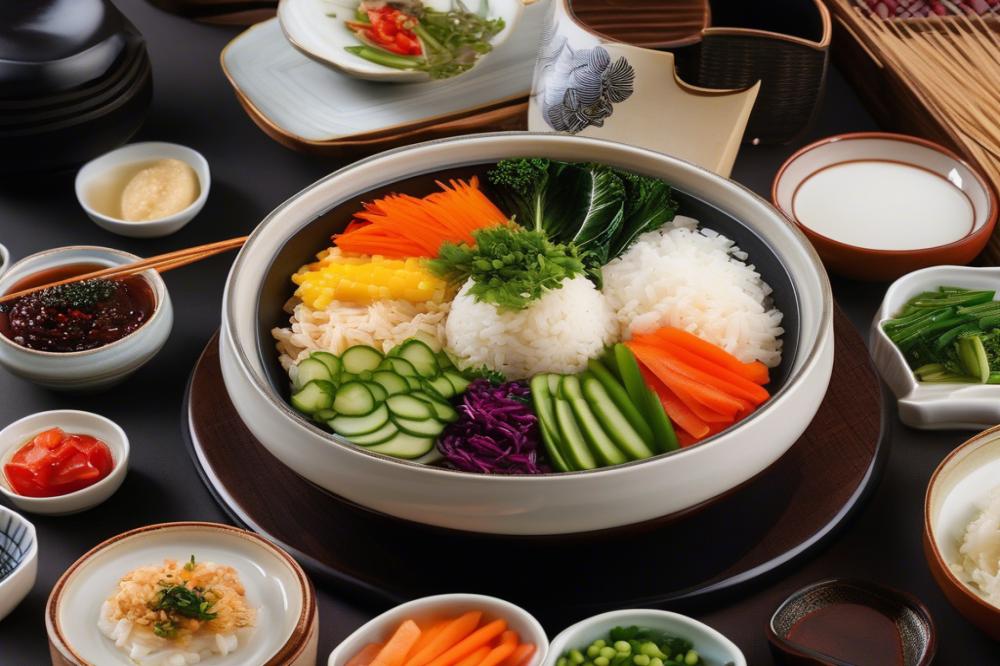
Cooking Japgokbap can be a rewarding experience. The following steps will guide you through the process. Begin by gathering your ingredients. This recipe includes a variety of grains such as brown rice, barley, and millet for a delicious multigrain dish.
Soaking the grains is a crucial step. It helps to soften them and allows for even cooking. Soak for at least two hours, or overnight if possible. This practice enhances the nutritional benefits and improves the texture of your healthy rice.
Cooking Techniques: Steam vs. Boil
When it comes to cooking, steaming or boiling are both great options. Steaming can preserve nutrients better than boiling. However, boiling may be easier for beginners. Choose the method that best fits your preferences.
If you decide to steam, use a bamboo or metal steamer. Fill it with water, but don’t let the water touch the grains. Steaming has a more delicate approach, resulting in softer rice. Alternatively, boiling requires a pot of water. After grains are soaked, drain and add them to the pot. It is a simple, straightforward method.
Cooking Time and Equipment Recommendations
Cooking time will depend on the grains you choose. Typically, steamed grains may take around 30 to 35 minutes. Boiled grains can cook in 20 to 25 minutes. Always check for doneness by tasting a grain. You want it to be tender but not mushy.
Using a rice cooker can make this task easier. A rice cooker is ideal for keeping track of cooking time. It can adjust to different textures based on your preference. If you don’t have one, a pot will do just fine. Either way, make a delicious side dish that complements any traditional Korean food.
Remember these cooking tips for best results. Rinse the grains before soaking to remove any dust. Patience is key in rice preparation to achieve the best flavor. Enjoy the journey of creating this easy recipe. You’ll love the hearty taste of this gluten-free dish.
Cooking Tips and Variations
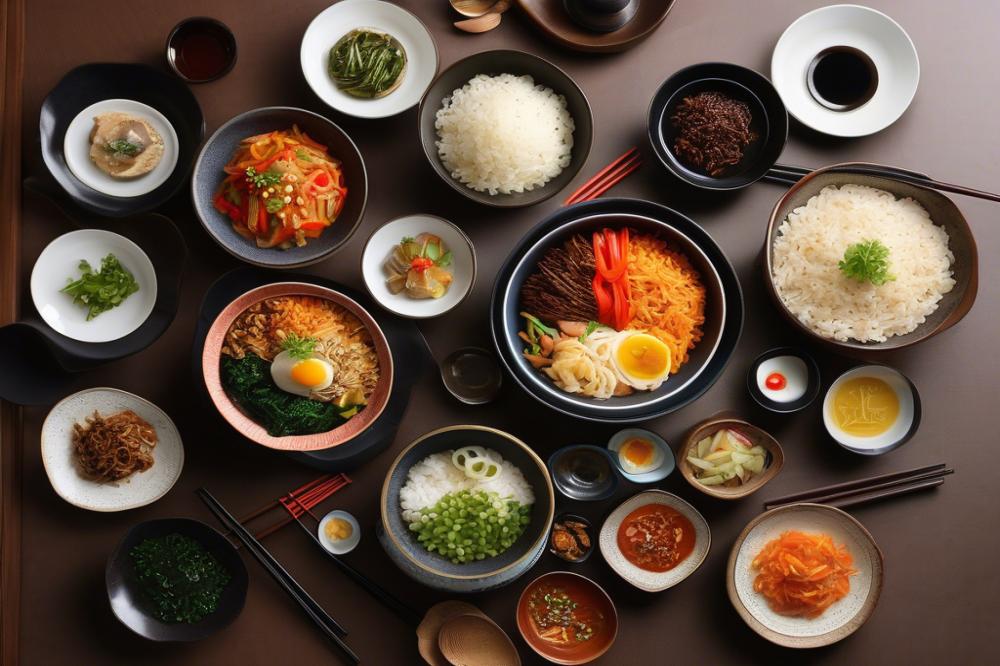
Achieving the perfect texture and flavor requires attention to detail. Start with high-quality grains and rinse them thoroughly. Use cold water when soaking mixed grains. This simple step can remove excess starch, leading to a less sticky result. Cooking on low heat also helps the grains to absorb water evenly. Stirring occasionally during cooking promotes even texture throughout the rice.
Enhancing Flavor
To enhance the dish with herbs or spices, consider adding garlic, ginger, or scallions. These ingredients complement the nutty flavor of multigrain rice. Fresh herbs like cilantro or parsley can add brightness when sprinkled on top before serving. Additionally, a splash of sesame oil brings a subtle richness, elevating the overall taste. Soy sauce or a sprinkle of toasted sesame seeds can provide that extra depth.
Serving Suggestions
This multigrain recipe works well as a side dish with traditional Korean food. Serve it alongside grilled meats like bulgogi or spicy kimchi. It pairs nicely with fish dishes as well. For a vegetarian option, enjoy it with sautéed vegetables seasoned with soy sauce. You can create a colorful and nutritious meal by placing Japgokbap at the center of your table. Just think about how vibrant colors enhance your experience.
Gluten-Free Options
There are gluten-free options for those needing dietary adjustments. Quinoa and millet can serve as excellent substitutes in place of traditional grains. Both options maintain a good texture and are full of nutritional benefits. Brown rice can also work but may slightly alter the flavor profile. Experimenting with different ratios of grains offers a personalized touch to the dish.
Nutritional Benefits of Japgokbap
Multigrain rice offers many health advantages that reflect the wisdom of traditional Korean food. Each grain contributes unique nutrients that together create a powerhouse of wellbeing. Incorporating this healthy rice into your diet can elevate not just meals but overall health.
Overview of the Health Benefits of Multigrain Rice
Eating multigrain rice is beneficial for several reasons. It provides a variety of vitamins and minerals. Boosting energy levels is one of its notable effects, thanks to the complex carbohydrates present in these grains. Many people appreciate its fiber content, which aids digestion and helps keep the body feeling full. Each variety of grain adds its own strengths, making this an excellent addition to any meal.
Focus on the Nutritional Aspects of Each Grain
When you think about multigrain rice, consider the diversity within it. Brown rice provides nutrients such as magnesium and selenium. Black rice stands out for its rich antioxidants, important for fighting off cellular damage. Red rice adds iron, which is crucial for healthy blood. Quinoa, often included, is a complete protein source. Each of these ingredients brings something different to the table, enhancing the overall nutritional profile of the dish.
How Japgokbap Contributes to a Balanced Diet
This multi-grain recipe is not only delicious but also contributes to a balanced diet. It can be easily paired with various side dishes, adding flavor and nutrition. Because the recipe is gluten-free, it can be enjoyed by those with sensitivities, ensuring more people can participate in the joy of Korean cuisine. Cooking tips for preparation suggest soaking grains before cooking. This practice helps enhance their texture and nutrient absorption. Preparing and enjoying this meal can be straightforward, making it an excellent choice for both busy families and curious cooks alike.
Bringing Japgokbap to Your Table
Japgokbap holds a significant place in Korean cuisine. This delightful dish is more than just rice; it represents a healthy way of eating that incorporates various grains. Each grain offers its own texture and flavor, making every bite a little adventure. Many people embrace this dish for its nutritional benefits. By combining different types of grains, you create a varied meal that is both delicious and wholesome.
Trying recipes at home can be a rewarding experience, especially when it involves simple meals like this one. Gather your ingredients and follow the steps provided. Cooking this multigrain rice can be easy and satisfying. As you prepare it, you’ll also learn more about the blend of flavors that can only come from combining different grains. Sharing the meal with family or friends adds another layer of enjoyment.
Healthy rice dishes can be a fun way to elevate any dining table. Not only is it nutritious, but it also connects you to a rich cultural tradition. Eating such meals nourishes the body while bringing joy and comfort to those who savor them. With just a little practice, you’ll find that preparing this dish is nothing short of enjoyable. Now is the perfect time to dive into the world of multigrain cooking. Taste the difference and embrace the health benefits it brings.

